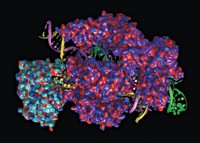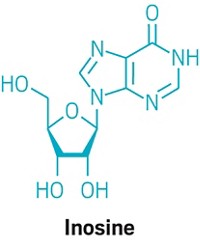Advertisement
Grab your lab coat. Let's get started
Welcome!
Welcome!
Create an account below to get 6 C&EN articles per month, receive newsletters and more - all free.
It seems this is your first time logging in online. Please enter the following information to continue.
As an ACS member you automatically get access to this site. All we need is few more details to create your reading experience.
Not you? Sign in with a different account.
Not you? Sign in with a different account.
ERROR 1
ERROR 1
ERROR 2
ERROR 2
ERROR 2
ERROR 2
ERROR 2
Password and Confirm password must match.
If you have an ACS member number, please enter it here so we can link this account to your membership. (optional)
ERROR 2
ACS values your privacy. By submitting your information, you are gaining access to C&EN and subscribing to our weekly newsletter. We use the information you provide to make your reading experience better, and we will never sell your data to third party members.
Gene Therapy
One-time CRISPR hit lowers cholesterol in monkeys
Verve Therapeutics demonstrates long-term LDL reduction for base editor therapy
by Alla Katsnelson, special to C&EN
May 19, 2021
| A version of this story appeared in
Volume 99, Issue 19

A single shot of gene therapy lowers “bad” cholesterol by about 60% for at least 8 months in monkeys, a new study reports (Nature 2021, DOI: 10.1038/s41586-021-03534-y). The shot knocks down a gene called PCSK9, which stands for proprotein convertase subtilisin/kexin type 9. PCSK9 proteins typically bind receptors that break down artery-clogging low-density lipoprotein (LDL) cholesterol. Without functioning PCSK9, cells have more LDL receptors available to grab and remove LDL from the blood.
Currently, doctors treat high cholesterol with statins as well as antibodies to the PCSK9 protein, which people must take daily or weekly. A long-term treatment would improve patient adherence to therapies, the researchers write. The gene therapy would be particularly relevant for people with a rare condition called familial hypercholesterolaemia, which leads to consistently high cholesterol levels and is caused by mutations in PCSK9.
“This is a landmark study, with important implications for a one-time treatment for patients suffering from elevated cholesterol due to genetic reasons,” David R. Liu, chemical biologist at Harvard University, says in an email. Although Liu was not involved in the work, he cofounded Beam Therapeutics, which also participated in the study.
In the study, scientists from Verve Therapeutics and their colleagues used a relatively new type of gene therapy called a base editor, which can replace a single nucleotide in a gene’s DNA sequence without creating a break in the double helix. Base editing is a more precise and less error-prone variation on traditional CRISPR gene editing, which uses the protein Cas9 to cut DNA. Here, the therapy consists of a lipid nanoparticle that carries the base editor, which changes a single nucleotide in PCSK9 from an adenine to a guanine, and the corresponding thymine to a cytosine on the complementary DNA strand, to incapacitate the gene.
The researchers injected the therapy into cynomolgus monkeys and found that it incapacitated the gene in most liver cells where the PCSK9 protein is most abundantly produced. A week after the injection, blood levels of PCSK9 fell by 90% and the effect on cholesterol levels continued for at least 8 months, the longest period tested. The company declined to comment on the study.
The high editing efficiency and the long-lasting effect make this “exactly the type of editing needed to treat most genetic diseases,” says Liu.
Other researchers developing gene-editing therapies agree. “For now, the combination of base editing and nonviral delivery has passed its key entrance exam with flying colors and one’s heart skips a beat at the notion that many hearts may beat more steadily in the future” thanks to the therapy described in the new study, Fyodor Urnov, a gene-editing scientist at the University of California, Berkeley, who was not involved in the work, says in an email.
The therapy’s efficacy in monkeys shows it is ready to be deployed in people, Urnov says. “At this point, only clinical data will tell us what the real promise of this approach is.”
Some scientists sound a note of caution, however. Nabil G. Seidah, a cardiovascular biologist at the Clinical Research Institute of Montreal who discovered PCSK9’s role in cholesterol signaling in 2003, notes that the gene has other functions besides cholesterol regulation. For example, it appears to play a role in immunity and is also expressed in unexpected places, like the testes and the pancreas, hinting of roles researchers have not yet identified.
Permanently disabling it with CRISPR may therefore have unforeseen effects, he says. “When you do the CRISPR, you’re stuck,” he says. “What’s the antidote?”.




Join the conversation
Contact the reporter
Submit a Letter to the Editor for publication
Engage with us on Twitter